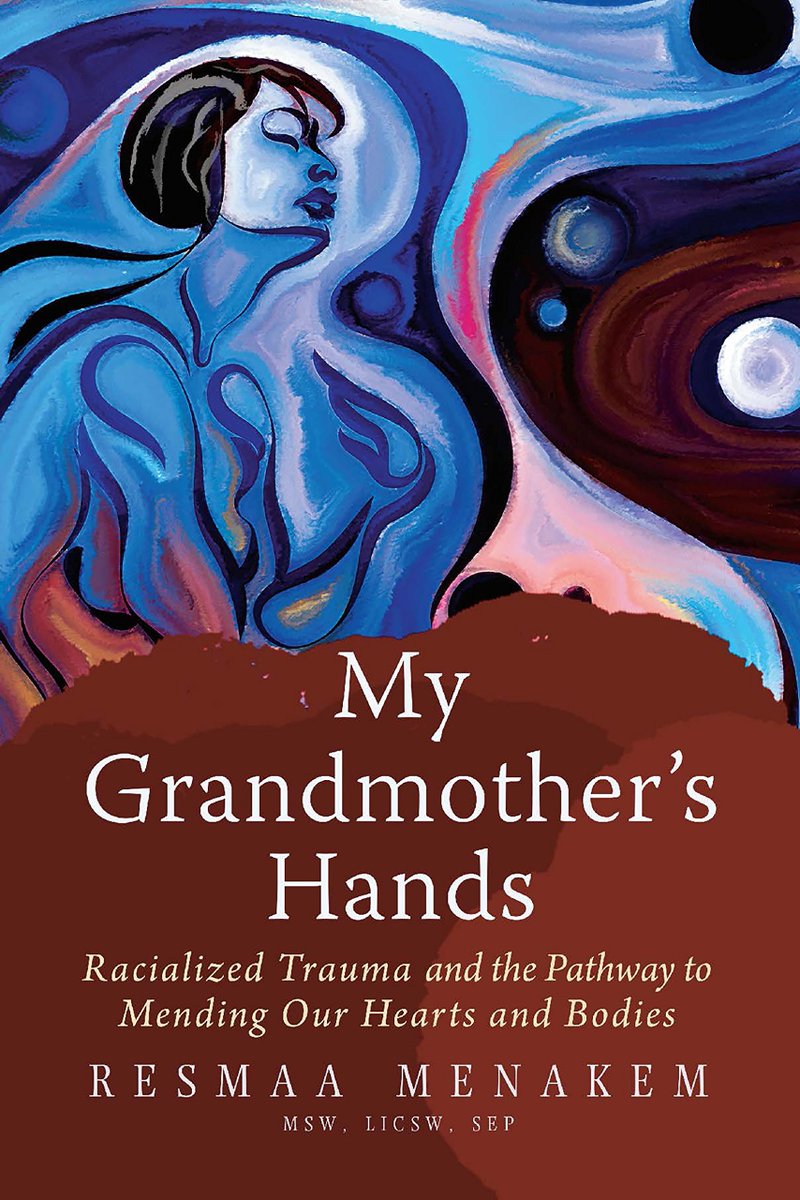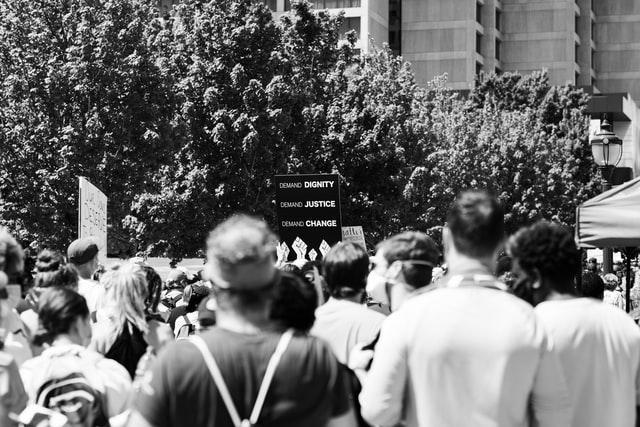While the author is clear that he is speaking specifically to American experience, this book is much more widely applicable in terms of understanding white supremacy. Menakem reframes this as white body supremacy and makes the case for healing bodies – all bodies, before real progress can take place. The author begins with his grandmother’s hands as a way into exploring intergenerational trauma, and cites research that shows trauma changes DNA expression and so can be inherited. Historical slavery has left a legacy of traumatised bodies and a need to understand how this affects people now, and how healing can take place. This healing needs to take place for white bodies too – Menakem looks back to the first settlers in America, that brought with them European trauma, and a culture of executing, torturing and brutalising other white bodies long before the oppression of bodies of colour.
Menakem argues that the history of slavery has also shaped the police system and structure, recalling the unregulated and undisciplined patrols that enforced control over the movement of black bodies. He argues that there is still a (sometimes unconscious) perception of black bodies as threatening, powerful and impervious to pain, and that the lizard brain’s activation of the threat response is seen when police use inappropriate and even fatal force when encountering black bodies, as in the shootings of Philando Castile (2016) and Tamir Rice (2014). In the police defence testimony of all cases, officers describe feeling in fear for their lives, a response incongruous with the actual circumstances they were facing. This is what Daniel Goleman calls brain hijacking – where the oldest pat of the brain or the lizard brain kicks in and takes over the thinking part of the brain. Menakem illustrates how this hijacking prompted extreme defensive action, and that this points to the significant need for white bodies to need to learn to regulate and how this needs to be built into police training to prevent further death. The book was written more than two years before the death of George Floyd.
The stress response isn’t only seen in action in these extreme circumstances though, the author invites white readers (and all readers) to notice how the body responds when conversation about race comes up, or as they progress through the book, to notice when and where constriction is felt. This discomfort, at the very mention of racial issues, has meant conversations that need to happen might be quickly closed or silenced. White bodies need to heal in order for white body supremacy to be addressed. This also means recognising and understanding white fragility.
Stimulating the vagus nerve, or soul nerve, as Menakem calls it is one path to healing. He suggests many activities including meditation and deep breathing, humming, singing, and soothing touch (some of which might feel uncomfortable or even unimaginable – such as offering to wash someone’s feet). Some of the suggestions might seem a bit ‘out there’ but the point is there are many ways to support healing and readers are left to their own judgements and choices here.
This is a valuable and challenging book in not just addressing white supremacy and racialised trauma, but in understanding how this is embodied – and how our own bodies are the starting point in a journey of progress.
Some caveats: the use of the term ‘red bodies’ feels uncomfortable – though this is in a general context of ‘othering’, ‘Native American’ or at least a gloss on why terms are being used would be helpful. There’s one instance of the controversial (and still ubiquitous) term ‘Islamic state’.




